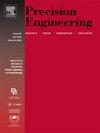Sensor-integrated data acquisition and machine learning implementation for process control and defect detection in wire arc-based metal additive manufacturing
IF 3.7
2区 工程技术
Q2 ENGINEERING, MANUFACTURING
Precision Engineering-Journal of the International Societies for Precision Engineering and Nanotechnology
Pub Date : 2025-04-25
DOI:10.1016/j.precisioneng.2025.04.028
引用次数: 0
Abstract
Wire Arc Additive Manufacturing (WAAM) offers significant advantages, such as a high deposition rate and cost-effectiveness compared to conventional manufacturing methods. However, WAAM faces challenges related to porosity, cracking, inclusions, lack of fusion, and geometric inaccuracies, which degrade component quality and performance. To optimize the quality of the built parts and minimize the potential defects, a good approach is to use sensors-based monitoring and controlling the process. In the process the date can be recorded by using sensors and send real-time feedback to the control system. This study aims to provide a comprehensive review of in-process sensing technologies and their integration with control systems to mitigate these defects. This work systematically categorizes sensing approaches including optical, acoustic, visual, thermal, and multi-signal methods while emphasizing the role of machine learning in real-time data processing for defect detection and control. Effectively detecting different types of defects usually requires various sensing technologies, specific focus areas, and careful attention. This also involves real-time data integration and advanced data processing. A key novelty of this review lies in its critical evaluation of multi-sensor integration strategies, real-time data fusion techniques, and their potential to enhance WAAM process reliability. By addressing the fundamental principles, current limitations, and future research directions, this study serves as a valuable resource for advancing intelligent monitoring solutions in WAAM.
基于线弧的金属增材制造过程控制和缺陷检测的传感器集成数据采集和机器学习实现
与传统制造方法相比,电弧增材制造(WAAM)具有显著的优势,例如高沉积速率和成本效益。然而,WAAM面临着与孔隙度、裂纹、夹杂物、缺乏融合和几何不精确相关的挑战,这些问题会降低部件的质量和性能。为了优化制造零件的质量并最大限度地减少潜在的缺陷,使用基于传感器的过程监控是一种很好的方法。在此过程中,数据可以通过传感器记录下来,并实时反馈给控制系统。本研究旨在提供过程传感技术及其与控制系统的集成以减轻这些缺陷的全面回顾。这项工作系统地对传感方法进行了分类,包括光学、声学、视觉、热和多信号方法,同时强调了机器学习在缺陷检测和控制的实时数据处理中的作用。有效地检测不同类型的缺陷通常需要不同的传感技术、特定的关注领域和仔细的关注。这也涉及到实时数据集成和高级数据处理。这篇综述的一个关键新颖之处在于它对多传感器集成策略、实时数据融合技术及其提高WAAM过程可靠性的潜力进行了批判性评估。通过阐述WAAM的基本原理、目前的局限性和未来的研究方向,本研究为推进WAAM智能监控解决方案提供了宝贵的资源。
本文章由计算机程序翻译,如有差异,请以英文原文为准。
求助全文
约1分钟内获得全文
求助全文
来源期刊
CiteScore
7.40
自引率
5.60%
发文量
177
审稿时长
46 days
期刊介绍:
Precision Engineering - Journal of the International Societies for Precision Engineering and Nanotechnology is devoted to the multidisciplinary study and practice of high accuracy engineering, metrology, and manufacturing. The journal takes an integrated approach to all subjects related to research, design, manufacture, performance validation, and application of high precision machines, instruments, and components, including fundamental and applied research and development in manufacturing processes, fabrication technology, and advanced measurement science. The scope includes precision-engineered systems and supporting metrology over the full range of length scales, from atom-based nanotechnology and advanced lithographic technology to large-scale systems, including optical and radio telescopes and macrometrology.

 求助内容:
求助内容: 应助结果提醒方式:
应助结果提醒方式:


